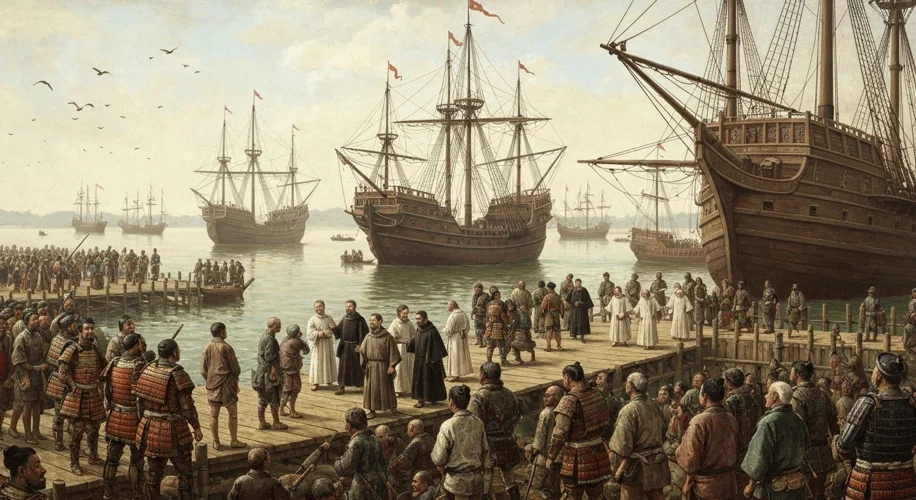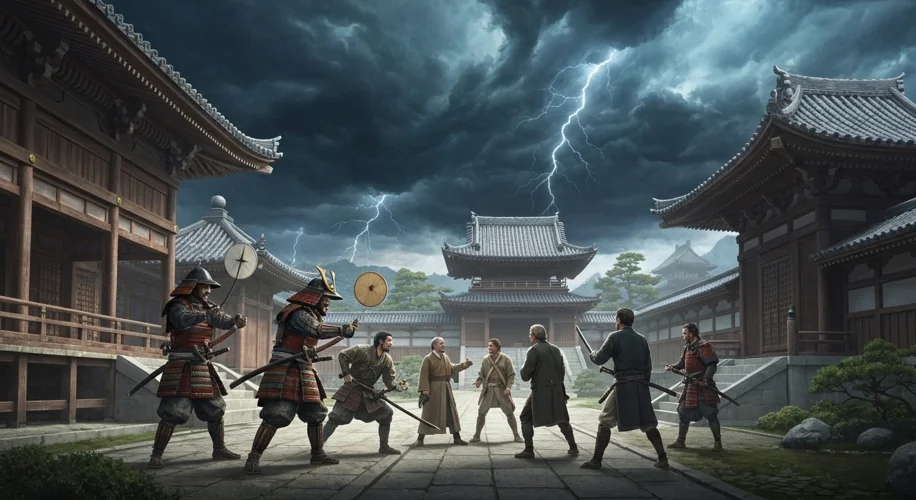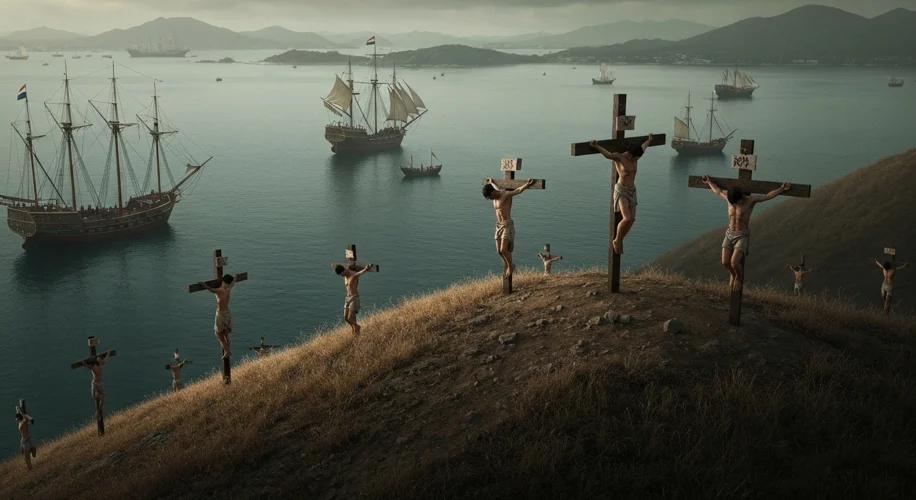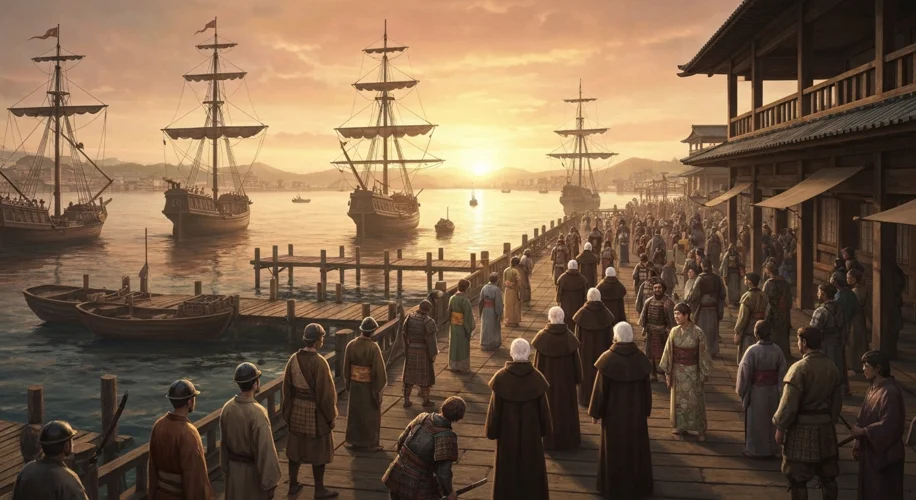The year is 1549. A ship, a speck against the vast Pacific, cuts through the waves, carrying not merchants or soldiers, but men armed with faith and a fervent desire to spread the word of God. Their destination: Japan, a land of ancient traditions, samurai warriors, and a spiritual landscape largely untouched by the West. Among these pioneers was Francis Xavier, a co-founder of the Society of Jesus, whose arrival marked the dramatic beginning of Christian missionary efforts in Japan during the tumultuous early modern period.
Japan, at this time, was a nation in flux. The Sengoku Jidai, or Warring States period, had just concluded, leaving a fractured society seeking a new order. Into this volatile environment stepped Portuguese traders and, crucially, missionaries. These men, driven by a zeal that bordered on the miraculous, saw Japan as fertile ground for their beliefs. Their initial interactions were marked by a mix of curiosity and caution from the Japanese people. The missionaries, in turn, were fascinated by the intricate social hierarchies, the aesthetic sensibilities, and the deeply ingrained spiritual practices of Buddhism and Shinto.
Xavier and his companions, including Cosme de Torres and João Fernandes, faced immense challenges. They learned the language, albeit imperfectly, and attempted to understand the complex philosophical underpinnings of Japanese society. Xavier, in particular, recognized the importance of adapting their message. He initially focused on the ruling class, hoping that conversion at the top would trickle down. He presented Christianity as a philosophy that offered salvation and a path to eternal life, concepts that resonated with some, especially in a society that had just endured decades of brutal conflict.

The missionaries’ efforts yielded remarkable, albeit temporary, successes. By the late 16th century, an estimated 100,000 to 300,000 Japanese had converted to Christianity. Cities like Nagasaki became vibrant centers of Christian activity, boasting churches, schools, and hospitals run by missionaries. The Jesuits, Franciscans, and other orders established a tangible presence, their efforts supported by the Portuguese traders who saw a mutual benefit in these connections.
However, this period of relative openness was destined to be short-lived. The success of the missionaries began to alarm the ruling shogunate, particularly Tokugawa Ieyasu, who rose to power in 1603, ushering in the Edo period. The shogunate grew increasingly suspicious of the missionaries’ growing influence, fearing that their loyalty lay with Rome rather than with Japan. The conversion of powerful daimyo (feudal lords) was seen as a direct threat to the centralized control the Tokugawa sought to establish. Furthermore, the aggressive tactics of some friars, particularly the Franciscans, who openly criticized Japanese customs and beliefs, exacerbated tensions.
The turning point arrived with the Shimabara Rebellion of 1637-1638. This large-scale peasant uprising, though primarily driven by economic grievances and heavy taxation, was perceived by the shogunate as a Christian revolt. While historians debate the extent of direct missionary involvement, the rebellion served as the final catalyst for drastic action. The shogunate, determined to eliminate any foreign influence that could destabilize their rule, implemented the Sakoku policy – the national seclusion.

Starting in the 1610s and intensifying throughout the 1620s and 1630s, a brutal wave of persecution swept across Japan. Missionaries were arrested, tortured, and executed. The most common methods of execution were beheading and crucifixion, designed to instill fear and deter any further attempts at evangelism. Japanese Christians were forced to renounce their faith, often under extreme duress. Many refused and faced death, becoming martyrs in the eyes of their fellow believers. The infamous crucifixion site at Nishizaka Hill in Nagasaki became a grim testament to the scale of this persecution.

The Sakoku policy effectively severed most ties with the outside world for over two centuries. Japan closed its doors to all but a limited, heavily controlled trade with the Dutch and Chinese. Christianity was driven underground, with secret communities of ‘Kakure Kirishitan’ (hidden Christians) preserving their faith in clandestine ways, often blending Christian rituals with Buddhist practices to avoid detection. Their story is one of incredible resilience, a testament to the enduring power of faith even in the face of relentless oppression.
The legacy of the missionaries in Japan is complex and multifaceted. On one hand, their efforts ultimately failed to establish a lasting Christian majority. The shogunate’s fierce suppression ensured that Christianity remained a minority religion, practiced in secret for centuries. On the other hand, the missionaries introduced new technologies, scientific knowledge, and different philosophical ideas to Japan, subtly influencing its development. Their story also highlights the profound clash between cultural and religious ideologies, the complexities of intercultural communication, and the brutal realities of political control in early modern East Asia. The arrival of Christianity, though ultimately curtailed, left an indelible, albeit often hidden, mark on the rich tapestry of Japanese history.

